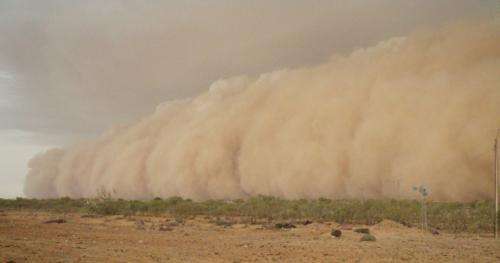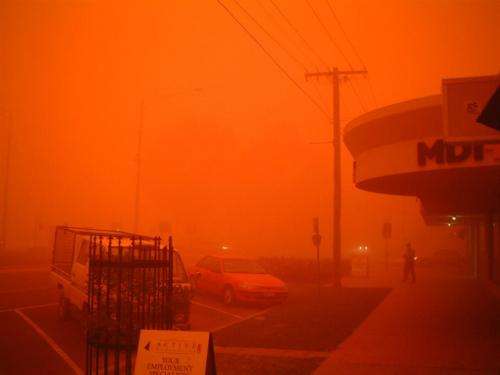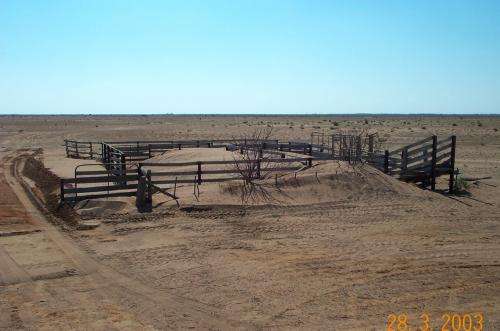Soil carbon 'blowing in the wind'

Top soil is rich in nutrients and carbon but is increasingly being blown away by events such as the 'Red Dawn' in Sydney in 2009.
When wind lifts carbon dust into the atmosphere it changes the amount and location of soil carbon.
Some carbon falls back to the ground while some leaves Australia or ends up in the ocean.
CSIRO research scientist Dr Adrian Chappell and an international team of experts in wind erosion and dust emission recently calculated the extent of these carbon dust emissions.
"Carbon stored in our soils helps sustain plant growth. Our modelling shows that millions of tonnes of dust and carbon are blowing away, and it is uncertain where all that ends up," Dr Chappell said.
"We need to understand the impact of this dust carbon cycle to develop more accurate national and global estimates of carbon balances and to be able to prepare for life in a changing climate.
"Australia's carbon accounts, and even global carbon accounts, have not yet taken wind or water erosion into consideration and when this happens it could have significant impacts on how we manage our landscapes. While soil organic carbon lost through dust is not a major contributor to Australia's total emissions, it is a major factor in our deteriorating soil health."

Carbon is an essential ingredient for the healthy soils which underpin Australia's capability to produce enough food to feed 60 million people.
Understanding the movement of carbon through the landscape is a necessity if we are to improve the quality of our soils and support farmers and land managers to store carbon.
This is not an issue for Australia alone. Other countries will also need to know the fate of their wind-blown carbon; countries like the USA and China with larger dust emissions will likely face similar challenges when including wind borne dust in their carbon accounting.
With the frequency and intensity of dust storms likely to increase in Australia, the impact of wind erosion would also increase.

This redistribution of carbon needs to be better understood so we can improve our land management practices to better protect our soils.
Recent research estimated that the 'Red Dawn' dust storm that passed over the eastern coast of Australia on 23 September 2009 cost the economy of New South Wales A$300 million, mainly for household cleaning and associated activities.
The research paper "Soil organic carbon dust emission: an omitted global source of atmospheric CO2" was published in the latest issue of the journal Global Change Biology.
More information: Chappell, A. et al. 2013. Soil organic carbon dust emission: an omitted global source of atmospheric CO2 [external link]. Global Change Biology. DOI: 10.1111/gcb.12305
Journal information: Global Change Biology
Provided by CSIRO

















